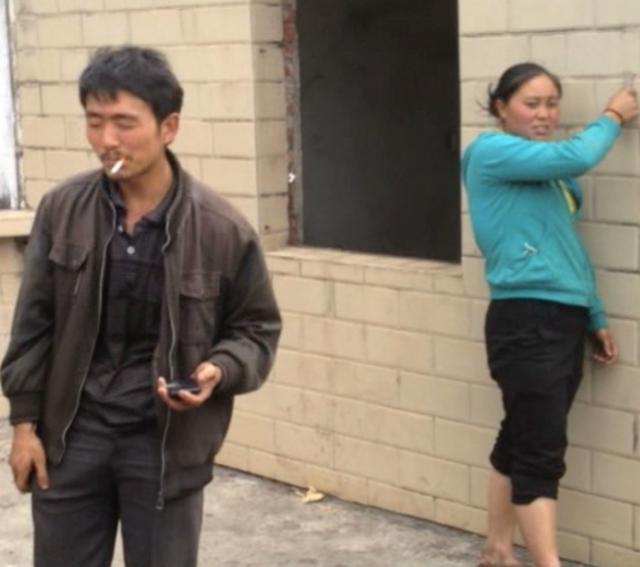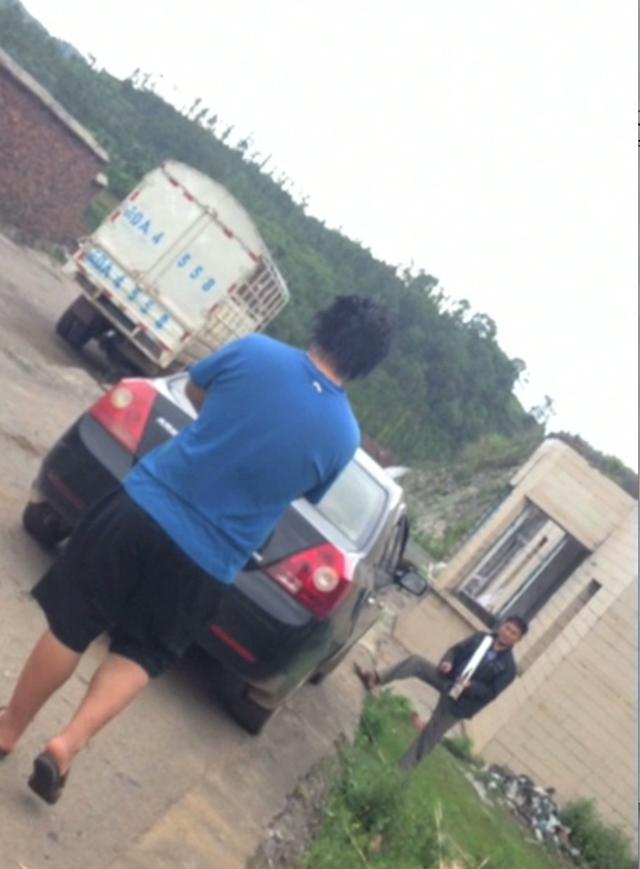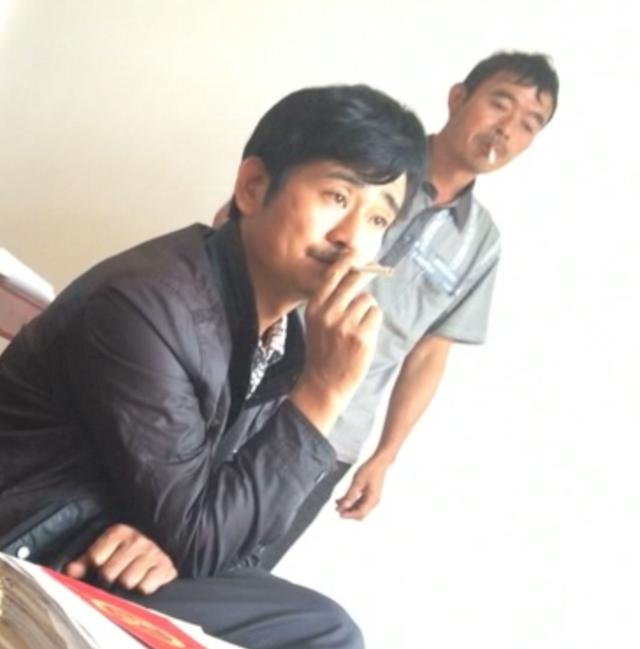In today’s report, Part Two, GeoInvesting continues publication of the extensive evidence underlying our September 19, 2013 report accusing L&L Energy (LLEN) of making massive misrepresentations in its SEC filings. The public has never seen this evidence, which we shared privately with the SEC, NASDAQ, and LLEN’s terminated independent legal counsel Mr. Mark Bartlett, in order to give them time to conduct their own investigations. Part one can be found here.
The evidence, consisting of interviews of local residents and government officials, including the local Communist Party Chief (“CPC”), proves according to the CPC that LLEN fabricated revenues from the ZoneLin Coking Plant and failed to disclose that ZoneLin was actually shut down in February 2012, nine months before the purported asset swap with Union Energy.
Investigators first visited the demolished ZoneLin plant in July 2013 and interviewed local residents using the plant’s gutted-out weighing station. The local residents provided some initial insight into the problems at ZoneLin that led to its closure and demolition. The notable points of these interviews are set forth below.
July 1, 2013
ZoneLin Local Residents (See Video, See Transcript)
a) ZoneLin was closed and torn down 7 to 10 months ago.
July 23, 2013
ZoneLin Local Residents (See Video, See Transcript)
a) ZoneLin stopped production about one year ago or since September 2012. [Contradicted by the local Communist Party General Secretary’s detailed explanation, below, that ZoneLin was shut down in February 2012]
b) Prior to be shut down, ZoneLin was not producing much and was always operating at a loss.
c) The local government paid money for the plant.
d) For the next 15 years the government decides what to do with the land.
e) The boss was LaoZhong Yang.
In September 2013 the investigators interviewed government officials in the villages next to the ZoneLin Coking Plant. The first official interviewed believed the plant was shut down in September or October 2012. However, the second official (General Secretary) provided a detailed explanation of how the plant actually stopped production in February 2012 as a result of the November 2011 Shizong mine accident (the same accident that LLEN failed to disclose had shuttered the Hong Xing Coal Washing Facility). The local residents and first official perhaps believed that the plant was still running in October 2012 because, as the General Secretary explained (below), the fire was being maintained in the plant’s coking oven to protect it, giving the appearance that the plant was still running.
September 16, 2013
ZoneLin Government Official Interview (Listen to Recording, See Transcript)
a) ZoneLin was shut down in September or October 2012 and demolished right afterwards. [Contradicted by the General Secretary’s detailed explanation, below, that ZoneLin was shut down in February 2012]
b) ZoneLin’s prior production was not high and was not profitable.
c) The land is currently not being used.
September 27, 2013
Henzhao Village Communist Party General Secretary interview (See Video, See Transcript)
a) LaoZhong (a/k/a ZoneLin) Yang was the only owner of the ZoneLin Coking Factory.
b) LLEN originally approached Yang to help and try to take ZoneLin public.
c) LLEN prepared monthly, and eventually, quarterly financial reports for ZoneLin to be used mainly for going public. The financials were not really reliable.
d) The November 10, 2011 Shizong mine accident shut down the coal supply to ZoneLin. Without coal, ZoneLin could only operate for about two more months, until the Chinese New Year, around February 2012.
e) The government mandated the capacity expansion of ZoneLin in 2008 or 2009, which had to be completed by 2010 or 2011 (or the plant would face closure).
f) All of ZoneLin’s permits and certificates were issued under Yang’s name and had been witnessed by the official, who considered Yang a friend.
g) The ZoneLin plant was torn down in December 2012 and took about 40 days to complete.
h) The ZoneLin plant was idled in February 2012, but continued to keep the fire going to protect the ovens, making it look as if the plant was still operating, even until it was torn down.
i) The ZoneLin land (100 Mu area) was always collectively owned by the village and is designated for agricultural use and can be rented for 800 RMB per Mu per year. ZoneLin had originally paid rent annually, and later on paid once every two years.
j) The government paid 1.5 million RMB to LaoZhong Yang as compensation (based on the size of its ovens) for the demolition of the plant.
The timing and circumstances of ZoneLin’s shutdown does not remotely resemble what LLEN disclosed in its SEC filings. In the end, each investor must decide which source he/she believes. For us, the obvious choice is the local Communist Party General Secretary, who we found to have a rich and detailed recollection of his own personal experience with the operation, finances, and closure of the ZoneLin facility.
Once again, the evidence really speaks for itself. Investors who once mocked our technique of talking to the local community (in this case, squatters at the ZoneLin facility) can now see that we prefer to use them as background information or as a source of leads. We have never maintained that villager interviews are conclusive in and of themselves. The local government officials we subsequently interview are obviously a more conclusive source of information.
To drive our point home, our approach to this type of due diligence is now even being mimicked by major investment firms, auditors, and as seen below, The National Business Daily (“NBD”), a nationally renowned news agency in China. When we introduced the LLEN story to the world, NBD took the initiative to conduct its own inquiries.
In October 2013, the NBD reporters covering the story did an on-site investigation into LLEN’s operation. On April 17 and April 18, 2014, NBD published a series of four articles detailing its investigation.
April 17, 2014
- “LLEN’s Controlling Shareholder is Prosecuted in the USA for Fraud: LLEN Voluntarily Applies for Delisting” (http://www.nbd.com.cn/articles/2014-04-17/826537.html)
April 18, 2014
- “The Cloud Over LLEN’s Coal Washing Business: Nearly 500 Million in Revenue Cannot be Confirmed” (http://www.nbd.com.cn/articles/2014-04-18/826944.html)
- “LLEN’s Mining Rights Doubtful, Business Operations do not Reflects its Financial Statements” (http://www.nbd.com.cn/articles/2014-04-18/826927.html)
- “LLEN’s Chinese Manager: Dickson Lee’s Prosecution is Irrelevant to the Company” (http://www.nbd.com.cn/articles/2014-04-18/826925.html)
We’ve summed up NBD’s most salient findings below:
Hong Xing Coal Washing
- The reporter(s) visited both the Shizong County State Tax Bureau and the Shizong County Local Tax Bureau. Based on local tax filings, Hong Xing did not have any taxable activities after June 2012.
- Based on the Industrial & IT Bureau of Shizong County, in 2012 Hong Xing had revenue of RMB 86.77 million, net income of RMB 7.56 million and total tax paid of RMB 3.47 million. Hong Xing ceased its operation in 2012.
- The reporter(s) talked to Mr. Li HongXing, who was the original owner of the Hong Xing Coal Washing plant and is the current owner of the Lannigou Coal Mine, a mine adjacent to the Hong Xing Coal Washing plant. Mr. Li HongXing comes to the Lannigou Coal Mine regularly and can observe Hong Xing Coal Washing’s daily operation. Mr. Li HongXing confirmed that from around 2012, the Hong Xing Coal Washing facility ceased its operations.
- An employee of the Walu Village Committee also confirmed that Hong Xing Coal Washing ceased its operation in 2012.
- Zhao Jun’an, Taifung’s accountant, confirmed that Hong Xing Coal Washing ceased its operation in June 2012 and has not filed any tax report since then.
Taifung Coal Washing and Hengtai Coal Washing
- The Taifung Coal Washing facility does not exist; there is only a Hengtai Coal Washing facility that is owned by Yang Laozhong. Hengtai Coal Washing was established in June 2012.
- The reporter(s) talked to Mr. Yang Shulin, who claimed to be the brother of Yang Laozhong. Mr. Yang Shulin confirmed that Hong Xing ceased its operation in 2012. From its establishment in June 2012 until November 2013, Hengtai only washed around 70,000 to 80,000 tons of coal, and its total revenue was only RMB 50 to 60 million.
- Mr. Yang Shulin confirmed that, in Shizong County, there are only two active coal washing factories – the Hengtai Coal Washing and the Minzhu Coal Washing, the latter of which is owned by an individual from Sichuan province.
- Zhao Jun’an, Taifung’s accountant, confirmed that the Hengtai Coal Washing is owned by Yang Laozhong, not by Taifung and/or LLEN.
LaShu Mine, LuoZhou Mine, and WeiShe Mine
- While visiting the WeiShe mine, the reporter(s) met Mr. Liu, who claimed to be the manager of the WeiShe, LaShu and LuoZhou mines. Mr. Liu confirmed that Union Energy owned these three mines.
- Song Zhang, the administrative vice general manager of Union Energy, confirmed that Union Energy owned the WeiShe, LaShu, and LuoZhou mines.
- All SAIC files do not show that LLEN owns any interest in the LaShu, LuoZhou, and WeiShe mines. The SAIC files of the DaPuAn and SuTsong mines also do not show LLEN’s ownership.
- Before August 2013, the WeiShe Mine only produced engineering (development) coal.
- The LaShu Mine started its production as of November 2013.
- The LuoZhou Mine ceased production in September 2013, and most of the miners left the mine. Mr. Qing, manager of LuoZhou’s logistics department, stated that the reason for the production shutdown is unknown.
NBD’s detailed investigation clearly and independently supports many of our conclusions and raises important new issues on its own.


